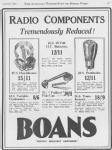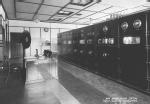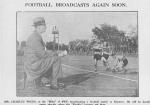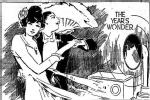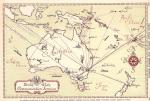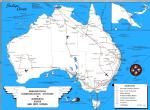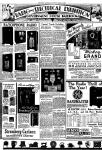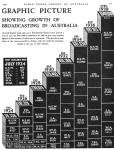
List of manufacturers Australia
| Manufacturers by alphabet | Model count | Models with | Total | ||||||||||
|---|---|---|---|---|---|---|---|---|---|---|---|---|---|
| Total | <1930 | >1942 | |||||||||||
| 5 | 0 | 5 | 5 | 1 | 1 | 8 | 3 | |||||||
| 6 | 0 | 6 | 6 | 3 | 3 | 1 | 10 | 4 | 3 | |||||
| 1 | 0 | 1 | 1 | 1 | 5 | 3 | ||||||||
| 3 | 0 | 3 | 3 | 3 | ||||||||||
| 3 | 0 | 3 | 3 | 3 | 3 | 3 | ||||||||
| 121 | 0 | 121 | 60 | 13 | 7 | 109 | 7 | 126 | 140 | 3 | ||||
| 2 | 0 | 2 | 2 | 3 | 3 | |||||||||
| 29 | 0 | 29 | 25 | 6 | 5 | 18 | 1 | 72 | 9 | 4 | ||||
| 31 | 0 | 31 | 23 | 8 | 7 | 30 | 1 | 50 | 12 | 2 | ||||
| 32 | 0 | 32 | 22 | 32 | 1 | 24 | 2 | |||||||
| 5 | 0 | 5 | 5 | 5 | 3 | |||||||||
| 1 | 0 | 1 | 1 | 12 | 2 | |||||||||
| 40 | 0 | 40 | 11 | 23 | 4 | 37 | 12 | 32 | 64 | 1 | ||||
| 8 | 0 | 8 | 8 | 14 | 4 | |||||||||
| 32 | 0 | 2 | 1 | 15 | 1 | 1 | 31 | 37 | 1 | 5 | ||||
| 17 | 0 | 1 | 12 | 16 | 1 | 1 | 11 | 5 | 62 | 1 | 1 | |||
| 33 | 0 | 30 | 5 | 5 | 1 | 32 | 13 | 5 | 1 | |||||
| 283 | 0 | 3 | 98 | 134 | 154 | 86 | 272 | 7 | 486 | 264 | 5 | |||
| 3 | 0 | 3 | 3 | 4 | 1 | |||||||||
| 3 | 0 | 2 | 3 | 2 | 2 | |||||||||
| 1438 | 16 | 46 | 1082 | 884 | 466 | 324 | 1043 | 445 | 2866 | 1345 | 5 | |||
| 7 | 127 | 3 | 3 | 5 | 1 | 6 | 12 | 10 | 5 | |||||
| 0 | 0 | 1 | ||||||||||||
| 10 | 0 | 1 | 10 | 17 | 4 | |||||||||
| 5 | 0 | 4 | 4 | 2 | 1 | 20 | 2 | |||||||
| 12 | 0 | 12 | 12 | 12 | 2 | |||||||||
| 9 | 0 | 5 | 9 | 6 | 19 | 3 | ||||||||
| 7 | 0 | 7 | 7 | 7 | 2 | |||||||||
| 4 | 0 | 4 | 3 | 7 | 1 | |||||||||
| 9 | 0 | 2 | 8 | 2 | 1 | |||||||||
| 1 | 0 | 1 | 1 | 3 | ||||||||||
| 98 | 0 | 7 | 94 | 7 | 98 | 10 | 106 | 4 | ||||||
| 1 | 0 | 1 | 3 | |||||||||||
| 0 | 0 | 5 | ||||||||||||
| 1 | 0 | 1 | 1 | 1 | 1 | 2 | 3 | 3 | ||||||
| 0 | 0 | 2 | ||||||||||||
| 851 | 0 | 12 | 675 | 491 | 368 | 237 | 709 | 207 | 1501 | 854 | 4 | |||
| 1 | 0 | 1 | 1 | 1 | 1 | 1 | 3 | 2 | 3 | |||||
| 2 | 0 | 2 | 2 | 2 | 7 | 5 | ||||||||
| 0 | 0 | 3 | ||||||||||||
| 7 | 0 | 7 | 7 | 7 | 19 | 1 | ||||||||
| 0 | 0 | 3 | ||||||||||||
| 0 | 0 | 4 | ||||||||||||
| 0 | 0 | 1 | ||||||||||||
| 7 | 0 | 5 | 7 | 5 | 7 | 10 | 17 | 2 | ||||||
| 6 | 0 | 6 | 6 | 1 | 1 | 5 | 10 | 10 | 5 | |||||
| 1 | 0 | 1 | 1 | 1 | 1 | 1 | 2 | |||||||
| 364 | 0 | 2 | 188 | 141 | 86 | 35 | 361 | 356 | 170 | 2 | ||||
| 4 | 0 | 4 | 4 | 1 | 1 | 2 | 10 | 1 | 2 | |||||
| 4 | 0 | 4 | 4 | 3 | 16 | 2 | ||||||||
| 4 | 0 | 4 | 4 | 3 | 8 | 3 | ||||||||
| 1 | 0 | 1 | 1 | 1 | 9 | 3 | ||||||||
| 39 | 0 | 39 | 2 | 20 | 8 | 31 | 3 | 30 | 1 | |||||
| 38 | 0 | 38 | 37 | 13 | 36 | 96 | 2 | |||||||
| 1 | 0 | 1 | 1 | 4 | 2 | |||||||||
| 0 | 0 | 3 | ||||||||||||
| 48 | 0 | 22 | 37 | 20 | 48 | 33 | 66 | 1 | ||||||
| 4 | 0 | 4 | 3 | 2 | 1 | 4 | 3 | 5 | 1 | |||||
| 98 | 0 | 2 | 17 | 96 | 95 | 225 | 4 | |||||||
| 1 | 0 | 1 | 1 | 1 | 1 | 1 | ||||||||
| 38 | 0 | 18 | 8 | 31 | 45 | 11 | 4 | |||||||
| 0 | 0 | 3 | ||||||||||||
| 1 | 0 | 1 | 1 | 4 | 2 | |||||||||
| 3 | 0 | 1 | 3 | 6 | 3 | |||||||||
| 2 | 0 | 2 | 3 | |||||||||||
| 2 | 0 | 2 | 2 | 5 | ||||||||||
| 3 | 0 | 3 | 3 | 1 | 1 | 2 | 12 | 1 | 1 | |||||
| 2 | 0 | 2 | 2 | 9 | 2 | |||||||||
| 2 | 0 | 2 | 2 | 2 | 2 | 2 | ||||||||
| 7 | 0 | 7 | 5 | 7 | 2 | |||||||||
| 1 | 0 | 1 | 1 | 1 | 5 | 4 | ||||||||
| 3 | 0 | 3 | 3 | 1 | 1 | 1 | 3 | 9 | 1 | 2 | ||||
| 1 | 0 | 1 | 1 | 1 | 2 | |||||||||
| 472 | 0 | 69 | 237 | 206 | 94 | 468 | 1 | 374 | 264 | 4 | ||||
| 16 | 0 | 16 | 5 | 16 | 5 | 1 | ||||||||
| 1 | 0 | 1 | 1 | 1 | 11 | 2 | ||||||||
| 82 | 0 | 18 | 53 | 9 | 81 | 46 | 73 | 3 | ||||||
| 3 | 0 | 2 | 3 | 17 | 1 | |||||||||
| 3 | 0 | 3 | 3 | 5 | 4 | |||||||||
| 5 | 0 | 1 | 5 | 1 | 3 | |||||||||
| 2 | 0 | 2 | 2 | 2 | 3 | 3 | ||||||||
| 3 | 0 | 3 | 3 | 1 | 3 | 2 | ||||||||
| 0 | 0 | 3 | ||||||||||||
| 9 | 0 | 1 | 9 | 8 | 43 | 2 | ||||||||
| 3 | 0 | 3 | 3 | 2 | 22 | 1 | ||||||||
| 14 | 0 | 14 | 10 | 14 | 11 | 4 | ||||||||
| 3 | 0 | 1 | 3 | 3 | 3 | |||||||||
| 25 | 0 | 25 | 19 | 6 | 5 | 10 | 18 | 36 | 25 | 2 | ||||
| 12 | 0 | 12 | 12 | 4 | 40 | 3 | ||||||||
| 9 | 0 | 9 | 2 | 8 | 2 | 9 | 5 | 8 | 1 | |||||
| 10 | 0 | 10 | 1 | 3 | 1 | 10 | 6 | 3 | 4 | |||||
| 1 | 0 | 1 | 1 | |||||||||||
| 0 | 0 | 3 | ||||||||||||
| 0 | 0 | 3 | ||||||||||||
| 0 | 0 | 3 | ||||||||||||
| 1 | 0 | 2 | ||||||||||||
| 1 | 0 | 1 | 1 | 3 | 4 | |||||||||
| 13 | 0 | 6 | 12 | 10 | 38 | 3 | ||||||||
| 6 | 0 | 6 | 6 | 4 | 13 | 3 | ||||||||
| 2 | 0 | 2 | 1 | 1 | 3 | 1 | 5 | |||||||
Text/Pictures for Australia
Australian Broadcast Radio
There was interest in radio as far back as 1919, when amateur radio enthusiasts first did some experimental broadcasts. But it was not until mid-November 1923 when the government finally gave its approval for one station, 2SB in Sydney, to go on the air; it was owned by Amalgamated Wireless Australasia. The slow pace of licensing new radio stations dismayed even some government officials, who wished there could be stations in other cities. After 2SB (later known as 2BL), another station went on the air in Sydney—2FC, in early December 1923. In January 1924, 3AR in Melbourne took to the air, in June 1924, 6WF made its debut in Perth, and in October, Melbourne's second station, 3LO made its debut. But the other problem for Australian listeners was a system which was subscription only—to just one station. It was thus not possible to listen to a number of stations on one's radio. Public complaints led to a reversal of this rule in late 1924, and the government also began allowing the importation of American receiving sets. A national service, the Australian Broadcasting Commission, debuted in July 1932.
At 8.00pm on 1 July 1932, the Prime Minister Joseph Lyons inaugurated the ABC.
The ABC then controlled twelve stations – 2FC and 2BL in Sydney, 3AR and 3LO in Melbourne, 4QG in Brisbane, 5CL in Adelaide, 6WF in Perth, 7ZL in Hobart and the relay stations 2NC in Newcastle, 2CO at Corowa, 4RK in Rockhampton and 5CK at Crystal Brook.
Opening day programs included the first Children's Session with Bobby Bluegum, the first sports program, Racing Notes with W A Ferry calling the Randwick races, British Wireless News received by cable from London, weather, stock exchange and shipping news, the ABC Women's Association session (topics were 'commonsense housekeeping' and needlecraft), a talk on goldfish and their care, Morning Devotions, and music.
Stations opened in the morning and evening with a break in transmission during the day. At first, each State ran its own programs. After a few months, Melbourne and Sydney broadcast, on alternate evenings, a 'national program' to the eastern States. By the end of 1933, there were regular program relays between Brisbane, Sydney, Melbourne, and Adelaide and Perth. Until the Bass Strait cable was in operation in March 1936, however, the Hobart station could only augment its local program with disc-based recordings from the mainland.
All programs went to air live in the early days. It was not until 1935 that a disc recorder was installed in the Sydney studios. Until the arrival of tape in the mid-fifties, hard disc and later the wire recorder were the only means for recording program material.
Early Radio Programs
Over half of the early programs were music. As early as 1932, the ABC launched the first of its 'Australian Composers' competitions to encourage local composers. In 1934, Professor Bernard Heinze was appointed part-time musical adviser to the Commission. When the Commission was established it took over instrumental ensembles in Sydney and Melbourne. In 1936, on Heinze's recommendation, the ABC began establishing studio broadcasting orchestras in all States. Wireless choruses, dance bands (including the very popular Jim Davidson's ABC Dance Band) and a National Military Band were also formed in the early years.
Sporting events were covered, including the now famous 'synthetic' broadcasts of cricket tests played in England between England and Australia, where ABC commentators, using cables from London and sound effects produced in the Sydney studios, achieved authentic-sounding commentary of the match in play.
Drama was performed live, with many plays specially adapted for radio. All 36 of Shakespeare's plays were produced and broadcast between 1936 to 1938. The ABC also encouraged local dramatists, beginning with a competition for plays and sketches by Australian authors in 1934. In the first year of broadcasting, talks were given by such diverse speakers as King George V, Pope Pius XI, the Prime Minister of England Ramsay MacDonald, the Chancellor of the German Reich Adolph Hitler, authors J.B. Priestley and G.K. Chesterton and Captain of the English cricket team D.R. Jardine. Later speakers included Bertrand Russell and H.G. Wells.
Schools broadcasts began and by 1935, radio lessons were broadcast in all mainland States. By 1953, over 80 per cent of all Australian schools – State and private – utilised the ABC schools broadcasts as part of their weekly curriculum.
The Children's Session, with its Argonauts Club, ran briefly in Melbourne in 1933-34, and was revived as a national program in 1941. By 1950 there were over 50 000 Club members. The Club encouraged children's contributions of writing, music, poetry or art and was one of the ABC's most popular children's programs, running six days a week for 28 years, until it was broadcast only on Sundays and was finally discontinued in 1972.
From 1932 to 1936 stations in each State produced their own news bulletins – mostly the duty announcer read local and foreign news items straight from the newspapers, an arrangement sanctioned by a 'gentlemen's agreement' with the Australian Newspaper Proprieters Association. A midday news commentary by the 'Watchman' was one of the most popular programs.
In 1934, the ABC hired its first journalist. In 1936, the first Federal News Editor was appointed to control a national news service which was relayed to all States except Western Australia. News broadcasts now included material written for radio while 'backgrounders' were provided by 'prominent students of overseas affairs'. In 1939, a Canberra correspondent was engaged who began a nightly review of the proceedings in Parliament. News sources were also expanded by the engagement of many local news gatherers.
Beginning in December 1939, the ABC began publishing the ABC Weekly, offering full programming information until it ceased publication in most states by 1951. (Later, information on radio programming was included in the TV News Times, or TV Times, as it became. In 1961, it was again included in a weekly Radio Program Guide, expanded to become the ABC Radio Guide. Today, the ABC produces the popular 24 Hours magazine and radio program guide.)
Text in other languages
| Data Compliance | More Information |


